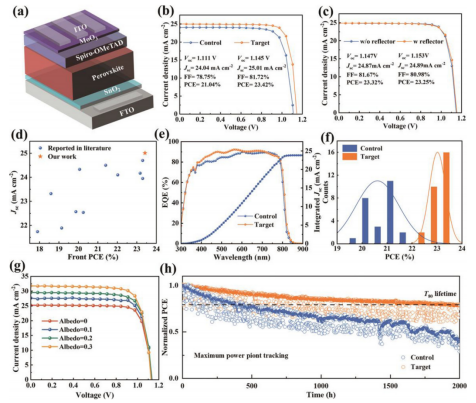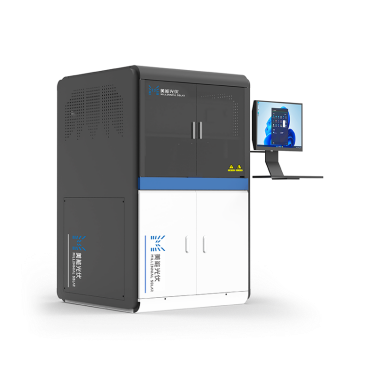
Quantum Efficiency Tester
PL/EL Integrated System
PV-Reflectumeter
3D Confocal Microscope
In-Line Four Point Probe Tester
Four Point Probe Tester
In-Line Thin Film Thickness Tester
Raman Spectrometer
FTIR Spectrometer
Spectrophotometer
Automatic Spectroscopic Ellipsometer
Contact Resistance Tester
Ultra depth of field 3D microscope
Auto Visual Tester
VMM PV Vision Measuring Machine
Solar Cell Horizontal Tensile Tester
Steady State Solar Simulator for Solar Cell
Solar Cell UV Aging Test Chamber
Solar Cell Comprehensive Tensile Tester
Visual Inspection Tester
Wet Leakage Current Tester
PV Module EL Tester
PV Module UV Preconditioning Chamber
Steady State Solar Simulator for PV Module
Current Continuous Monitor
Potential Induced Degradation Test
Bypass Diode Tester
LeTID Test System
Reverse Current Overload Tester
Impulse Voltage Tester
Hipot Insulation Tester
Ground Continuity Tester
Hipot Insulation Ground Tester
Damp Heat Test Chamber
Humidity Freeze Test
Thermal Cycle Test Chamber
Dynamic Mechanical Load Tester
Static Mechanical Load Tester
Hail Impact Tester
Robustness of Termination Tester
Module Breakage Tester
Cut Susceptibility Tester
Peel Shear Strength Tester
Universal Testing Machine (Single-arm)
Universal Testing Machine (Double-arm)
Glass Transmittance Tester
Acetic Acid Test Chamber
EVA Degree of Crosslinking Test System
Junction Box Comprehensive Tester
Drop ball tester
Semi-automatic scanning four-probe tester
Stylus Profilometer
Maximum Power Point Tracker
Perovskite Glass Transmittance Tester
Perovskite P1 Laser Scribing Multifunctional Testing Machine
Perovskite Online PL Tester
Perovskite Online Sheet Resistance Tester
Online Perovskite Film Thickness Tester
Perovskite Process Inspection Workstation
Portable IV Curve Tester
Portable EL Tester
Portable Thermal Imaging Tester
Solar Module Multi-Channel Testing System
PV Inverter Power Quality Tester
Drone EL Tester
Latest Science Bulletin | Bi-PSCs, bifacial chalcogenide solar cells, break through 23.4% efficiency at SUSU
Date : 2025-07-01Views : 15
Bifacial chalcogenide solar cells (Bi-PSCs) have a significantly lower short-circuit current density (Jsc) due to low photon utilization, which limits their performance. In this paper, we propose to minimize the photon loss by modulating the crystallization process of a highly concentrated chalcogenide precursor in order to prepare high-quality chalcogenide thin films (1320 nm). The optimized Bi-PSCs achieved a front surface efficiency of 23.4% (certified efficiency 22.96%) and a record Jsc (25.01 mA cm-²). Output power density of 26 mW cm-² was achieved under double-sided illumination with a reflectance of 0.2, and the unencapsulated cells maintained 80% initial efficiency after 2000 hours of MPPT tracking using the Millennial MPPT multi-channel cell testing system.
Crystallization of the chalcogenide precursor

(a) Crystallization process of 2.0 mol L-¹ chalcogenide precursor without EGTHCl doping (10-90 s)
(b) Crystallization process with EGTHCl doping (10-90 s), scale bar: 100 μm
(c) In situ UV-Vis absorption spectra of wet film during annealing process (with/without EGTHCl)
(d) 2θ-sin²ψ linear fit from GIXRD test
(e) Schematic diagram of the phase evolution of chalcogenide film formation with/without EGTHCl molecules
In terms of crystallization regulation, in the high concentration of precursor at 2.0 mol・L-¹, the undoped EGTHCl film undergoes rapid and disordered crystallization, with rough surfaces and a large number of pores;
whereas, after doping with EGTHCl, the crystallization process slows down remarkably (from 8.7 s to 12.5 s), and orderly top-down grain growth is formed, similar to the crystallization behavior of the precursor at the low concentration. The crystallization behavior of EGTHCl was similar to that of the precursor at low concentration.
Meanwhile, EGTHCl can significantly reduce the stress gradient inside the film, alleviate the lattice mismatch and the accumulation of stress at the grain boundaries, and further promote the orderly grain growth.
EGTHCl showed excellent performance in defect passivation.
SEM results show that it can improve the film flatness, reduce the surface PbI₂ content, and promote the formation of large grains across the thickness and reduce the intergranular extrusion effect .
XPS analysis confirmed that EGTHCl effectively reduces the defect state density by passivating iodine vacancies via Cl - and forming hydrogen bonds with I- via - NH₂⁺.
Photoluminescence (PL) and TRPL results show that EGTHCl reduces nonradiative complexation, extends carrier lifetime, and significantly improves film quality.
Performance enhancement of Bi-PSCs

(a) Cell structure of Bi-PSCs (FTO/SnO₂/calcitonite/passivation layer/Spiro-OMeTAD/MoOₓ/ITO)
(b) Current-voltage curves of control and optimized cells
(c) Comparison of J-V curves before and after addition of back reflection layer to the target cell
(d) Champion Jₛc vs. absorber layer thickness for existing Bi-PSCs
(e) External quantum efficiency (EQE) curve
(f) Histogram of cell efficiency statistics
(g) I-V curve under double-sided illumination
(h) Maximum power point tracking stability under continuous illumination
Based on the modulation strategy of EGTHCl, the performance of the double-sided film PSCs is fully optimized. The cell structure prepared is FTO/SnO₂/calcite/passivator/ SpiroOMeTAD/MoO₃/ITO, and its frontal PCE reaches 23.4%, and the short-circuit current density (Jsc) sets a record of 25.01 mA・cm-², which is the highest value of the dual-face mask PSCs so far.
In terms of optical performance, the 1.32 μm thickness of the chalcogenide film can meet the need to reduce photon loss, and the addition of a reflective layer does not significantly improve its Jsc, proving that the photon utilization efficiency of the thick film has been fully utilized. The backside performance test shows that the Jsc is 22.59 mA-cm-², the PCE is 20.64%, and the double-sided film factor reaches 0.887.
In terms of stability, the unencapsulated cell maintained 80% of its initial efficiency after 2000 hours of maximum power point MPPT tracking, far exceeding the 300 hours of the control cell. At an albedo of 0.2, the output power density of the cell reaches 26 mW-cm-², which is close to the performance of the best single-sided PSCs and shows great potential for application.
The EGTNCl strategy effectively solves the problem of high concentration precursor crystallization in bifacial chalcogenide solar cells (Bi-PSCs), improves crystal quality and defect passivation, and enables the front-end PCE of Bi-PSCs to break the record of 23.4%, and in terms of stability, it still maintains 80% of the initial efficiency after 2,000 hrs of MPPT tracking at the maximum power point. Scalable optoelectronic optimization pathways are provided to support Bi-PSCs commercialization (e.g., bifacial integration and photonic engineering) while filling the performance gap of single-sided PSCs.
Millennial MPPT Multi-Channel Battery Test System

Tel: 400 008 6690
Millennial MPPT Multi-Channel Battery Test System adopts A+AA+ grade LED sunlight simulator as the aging light source, which provides a strong support for the research of Calcium Titanium Solar Cells with its advanced technology and multi-functional design.
▶ Light Source Grade: A+AA+, Spectral Matching Grade A+, Uniformity Grade A, Long-Time Stability Grade A+
▶ Effective Spot Size: ≥250*250mm (Customizable)
▶ Light Intensity Adjustable: 0.2-1.5sun, Sequentially Adjustable in Steps of 0.1sun
▶ Power Independently Controllable: 300-400 nm/400-750 nm/750-1200 nm
Millennial MPPT multi-channel cell test system can provide a high-precision and multi-functional test platform for Calcium-Titanium-Oxide solar cells, especially focusing on dynamic performance tracking and light aging simulation.
Related Solutions

Perovskite & Organic Photovoltaic
Designing perovskite/functional layer compositions, improving processes, and optimizing architectures to achieve optimal photovoltaic performance and high-efficiency perovskite single/tandem solar cells.
View Details






























































